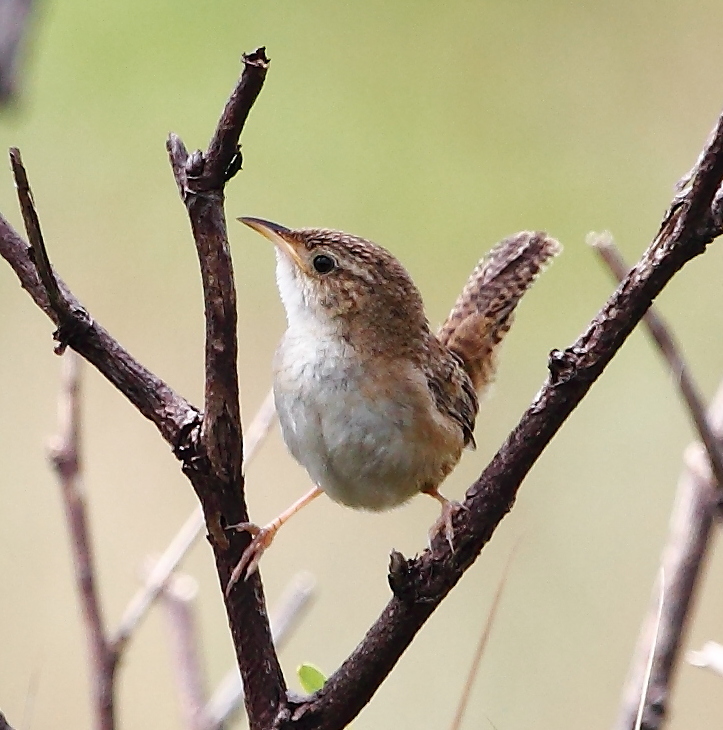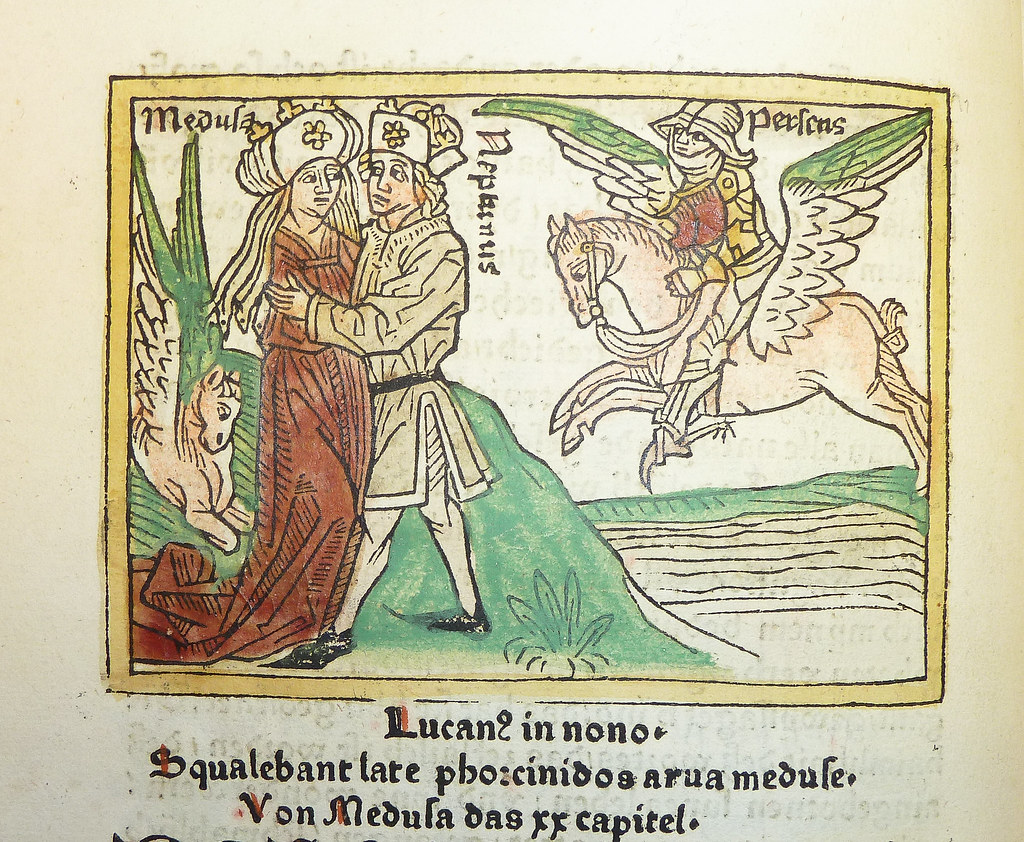Fuyez la tentation qui veut vous mettre au pieu, un vrai lit de rosiers dûment matelassé, soyez bien plus lucide pour n’être pas médusé, bondissez hardiment dessus la palissade, et loin de trépasser dès le surlendemain, tu pourras recueillir les faveurs populaires.

Le troglodyte de Latham, Cistothorus platensis, photo d’Hector Bottai (Lic. cc-by-sa-4.0).
Références scientifiques & linguistiques sur le troglodyte de Latham:
Présentations: Avibase.bsc-eoc.org: Cistothorus platensis Troglodyte de Latham, IucnRedlist.org: Cistothorus platensis Grass Wren par S.H.M. Butchart et alia, eBird.org: Troglodyte de Latham – Sotorrey Sabanero, Oiseaux.net: Troglodyte de Latham – Cistothorus platensis par Jean François, BirdsColombia.com: Cucarachero Paramuno/Grass Wren/Cistothorus platensis,
Encyclopédies: American Museum Novitates 1975 BiodiversityLibrary.org ou Archive.org: Revision of the Short-billed Marsh Wren Cistothorus platensis of Mexico and Central America par Robert William Dickerman, The Birds of the Republic of Panamá Part 4 1984 par Alexander Wetmore BiodiversityLibrary.org ou Archive.org: Cistothorus platensis lucidus Ridgway – Sedge Wren Saltapared de Ciénaga, A Guide to the Birds of Panama 1989 par Robert S. Ridgely et John A. Gwynne: Grass -Sedge- Wren Cistothorus platensis, The Birds of Panama – a field guide 2010 par George R. Angehr et Robert Dean: Sedge Wren Cistothorus platensis, Birds of Central America 2018 par Andrew C. Vallely et Dale Dyer: Sedge Wren Cistothorus platensis, American Ornithological Society 2021 AmericanOrnithology.org: In with the Old Out with the Mew – Update to the Check-list of North American Birds – Splitting of Sedge Wren and Grass Wren,
Nomenclature: Index Ornithologicus sive Systema Ornithologiæ complectens Avium Divisionem – Volumen II 1790 Ordo Passeres suite BiodiversityLibrary.org ou Archive.org: Genus Sylvia – platensis par John Latham, Museum Heineanum Verzeichniss der ornithologischen Sammlung des Oberamtmann Ferdinand Heine I Theil 1851 die Singvögel – Oscines BiodiversityLibrary.org ou Archive.org: Fam. Liotrichidæ Kurzflügler – Subfam. Troglodytinæ Schlüpfer – Von Troglodytes werden einige kleine gewissermassen an Cisticola erinnernde Arten als eigne Gruppe abzusondern sein – Gen. Cistothorus nov. gen. Cistschlüpfer par Jean Cabanis, Proceedings of the Zoological Society of London Part XXVIII 1860 Books.Google.fr: November 13th – Catalogue of the Birds of the Falkland Islands – Passeres – Fam. Troglodytidæ Cistothorus Platensis par Philip Lutley Sclater, Proceedings of the Biological Society of Washington 1903 BiodiversityLibrary.org ou Archive.org: Diagnoses of Nine New Forms of American Birds – Cistothorus polyglottus lucidus new subspecies par Robert Ridgway, Novitates Zoologicae 1921 BiodiversityLibrary.org ou Archive.org: Review of the Birds collected by Alcide d’Orbigny in South America Part II – Synallaxis troglodytoides Lafr. & Orb. = Cistothorus platensis platensis Lath. – complete revision of the South American races – Cistothorus platensis lucidus Ridgw. par Charles E. Hellmayr,
Birds of the World.org: The Key to Scientific Names Edited by James A. Jobling – Cistothorus,
Sémantique du ciste: Ciste Cistus – Ciste à gomme Cistus ladanifer – Étymologie du nom, Skizzirte Entwickelungs-Geschichte und Natürliches System der Europäischen Thierwelt 1829 BiodiversityLibrary.org ou Archive.org: Sylvia cisticola / Zistensänger Cisticola par Johann Jacob Kaup, Deutsches Wörterbuch von Jacob und Wilhelm Grimm DWDS.de: zisten, The Language and Poetry of Flowers and Poetic Handbook of Wedding Anniversary Pieces Album Verses and Valentines Together with a Great Number of Beautiful Poetical Quotations from Famous Authors 1878 Archive.org: The Vocabulary – Cistus or Rock-rose Popular favor / Cistus Gum I shall die to-morrow,
: Gorgóneia pedía Kisthênêç ïna aì Phorkídeç naíousi – ádelphaì tônde treĩç katápteroi drakontómalloi Gorgóneç / les champs gorgoniens de Cisthène où vivent les filles de Phorcys – les trois sœurs ailées à la chevelure de serpents,
colcha et colchón et colchonero -et- chocha et chochín, colcha, colcha, Diccionario Crítico Etimológico Castellano e Hispánico par Joan Corominas Archive.orgcolcha, Universidad de Granada – Estudio Lingüístico de Documentos de Lucena Córdoba de los Siglos XVI y XVII par Ana Isabel Pérez Cruz Digibug.UGr.es: colcha et colchón, Grupo de Investigación de Textos para la Historia del Español de la Universidad de Alcalá – Aproximación al léxico de los tejidos y la indumentaria en documentos notariales medievales par Irene Vicente Miguel TextosHispanicos.es: Ropa de cama – Cócedra et Colcha,
 Le nom latin du troglodyte de Latham renvoie au ciste, plante associée à Méduse; selon Eschyle, Méduse habitait Cisthène, la plaine riche en cistes; elle avait été séduite par Neptune dans un champ de fleurs, selon Hésiode, et de leur union naquit, selon Apollodore et Hygin, Pégase. Athéna métamorphosa Méduse, d’après Ovide, avant d’aider Persée à la vaincre, comme le racontent Phérécyde ou Lucain. Image de l’édition illustrée par Johannes Zainer de la traduction allemande par Heinrich Steinhöwel des Femmes célèbres de Boccace, 1474: Méduse et Neptune s’enlacent, Pégase à leurs pieds, tandis que Persée approche menaçant sur son cheval ailé. Original à la Bibliothèque de l’Université de Pennsylvanie, domaine public sur Flickr.com.
Le nom latin du troglodyte de Latham renvoie au ciste, plante associée à Méduse; selon Eschyle, Méduse habitait Cisthène, la plaine riche en cistes; elle avait été séduite par Neptune dans un champ de fleurs, selon Hésiode, et de leur union naquit, selon Apollodore et Hygin, Pégase. Athéna métamorphosa Méduse, d’après Ovide, avant d’aider Persée à la vaincre, comme le racontent Phérécyde ou Lucain. Image de l’édition illustrée par Johannes Zainer de la traduction allemande par Heinrich Steinhöwel des Femmes célèbres de Boccace, 1474: Méduse et Neptune s’enlacent, Pégase à leurs pieds, tandis que Persée approche menaçant sur son cheval ailé. Original à la Bibliothèque de l’Université de Pennsylvanie, domaine public sur Flickr.com.
Suite: Le Piaye écureuil
Textes © 2025 XNB – Association des roses noires






